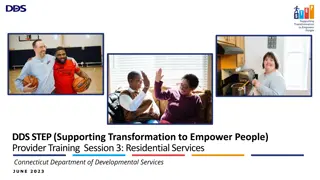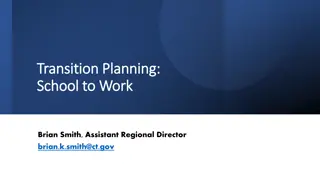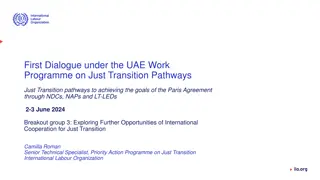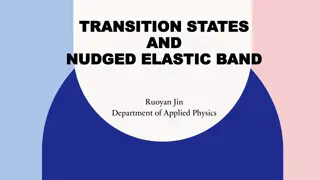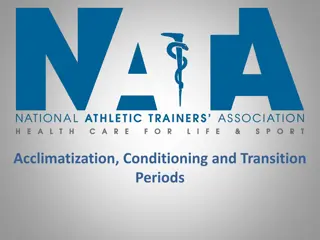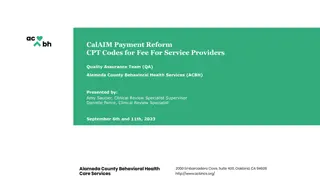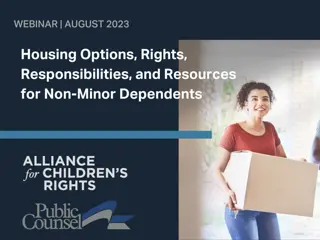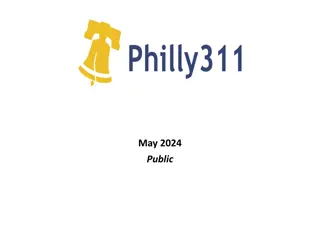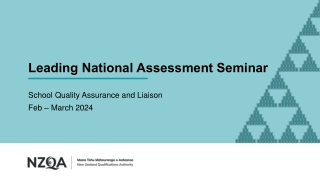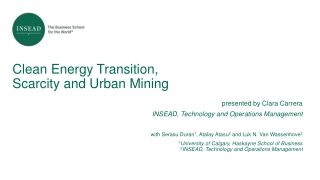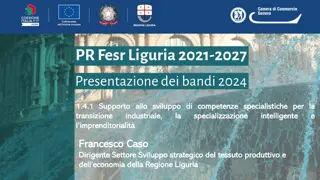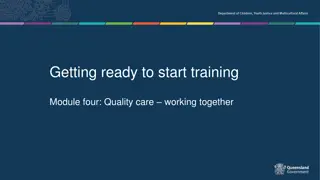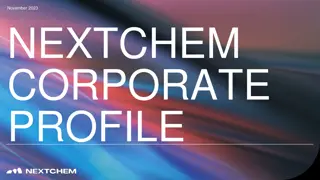Insights into the U.S. Refrigerant Transition in 2024
Discover the latest developments in the U.S. refrigerant transition, including updates on the AIM Act implementation, EPA regulations, and phasedown schedules. Stay informed about the state of American innovation and manufacturing in the HVACR industry.
Download Presentation
Please find below an Image/Link to download the presentation.
The content on the website is provided AS IS for your information and personal use only. It may not be sold, licensed, or shared on other websites without obtaining consent from the author. Download presentation by click this link. If you encounter any issues during the download, it is possible that the publisher has removed the file from their server.
Presentation Transcript
The U.S. Refrigerant Transition: The U.S. Refrigerant Transition: What you need to know in 2024 January 23, 2024
Introductions Introductions
Advocate for 330+ HVACR and water heating manufacturers Developer of 100+ international industry standards and guidelines Air Air- -Conditioning, Conditioning, Heating, and Heating, and Refrigeration Refrigeration Institute (AHRI) Institute (AHRI) Administer of 40+ certification programs
Our Members are Manufacturers Cooling and heating products for residential, commercial and industrial applications central AC & heating equipment commercial & industrial AC, heating & ventilation equipment commercial & industrial refrigeration equipment hydronic heating equipment components for heating, AC & refrigeration systems water heating equipment
Issues for Discussion Today Issues for Discussion Today Status of American Innovation and Manufacturing (AIM) Act Implementation EPA s Technology Transitions (TT) Final Rule EPA s Refrigerant Management (Subsection (h)) Proposed Rule State Building Code Updates for A2Ls/Low-Global Warming Potential (GWP) Refrigerants
Congress: Implementing legislation (AIM Act) passed and signed into law and Kigali Amendment ratified by U.S. Senate EPA: Implementation of the AIM Act is well underway awaiting the release of the Technology Transitions final rule U.S. Refrigerant U.S. Refrigerant Transition Transition Developments Developments Building codes are being updated in states to allow the new refrigerants Work ongoing with the Department of Transportation and OSHA
HFC/AIM Act/Kigali Amendment Phasedown Schedule 2011-2013 baseline: 2022: 10% reduction 2024: 40% reduction 2029: 70% reduction 2034: 80% reduction 2036: 85% reduction
HFC Regulatory Outlook HFC Regulatory Outlook HFC production and consumption phase down Technology Transitions (TT) Final Rule Refrigerant management (Subsection (h)) Proposed Rule SNAP approvals and use conditions California, Washington, and New York
HFC Phase Down HFC Phase Down EPA finalized allocation methodology for 2024-2028 HFC supply reduced to 60 percent of baseline in 2024 Allowance allocations based mostly on historical activity Commerce Department also cracking down on dumping Isolated legal challenges opposed by industry groups
Technology Transitions Technology Transitions EPA finalized Technology Transitions rule in October 2023 Sets GWP limits for new equipment in 2025-2028 Different requirements for products and systems Components for servicing/repair exempt Interim Final Rule starts fine tuning process
Refrigerant Management Refrigerant Management EPA proposed new refrigerant management rules in 2023 Leak detection/repair rules for commercial equipment Reclaim mandates for initial charge and servicing No new certification standards for technicians Wide range of views on recovery/reclaim policy goals
SNAP SNAP SNAP 25 finalized in 2023, approving several A2Ls SNAP 26 proposed in 2023 and expected final in 2024 SNAP 27 possible by end of 2024 or early 2025 Use conditions need to harmonize with new standards Provisional approval already issued for many A2Ls
States States California implementing its own HFC regulations California also developing further HFC restrictions Washington finalized HFC regulations in November 2023 New York proposed new HFC rules in December 2023 Other states not active on direct HFC restrictions for now
State Building Code Adoption State Building Code Adoption 45 states have approved the use of A2L refrigerants in some capacity Through a combination of code updates, legislation, and letters of interpretation These changes are effective today in 43 of these states
State Building Code Adoption State Building Code Adoption Priorities for 2024 Alaska, Hawaii, Massachusetts, Nevada, Michigan Alaska Legislation Hawaii Legislation Massachusetts Legislation and State Building Code being updated in 2024 Nevada Jurisdictional Building Codes being updated in 2024 Michigan Commercial refrigeration changes approved in code, seeking letter for residential air conditioning
State Building Code Adoption State Building Code Adoption Priorities for 2024 U.S. Territories AHRI working with each of the U.S. territories to update their codes Some states have approved A2L use in residential air conditioning but not for commercial refrigeration Updating state codes to reference the latest editions of ASHRAE 15, ASHRAE 34, UL 60335-2-40, and UL 60335-2-89 Warehousing aligning with 2024 IFC and NFPA 1
Education and Awareness Education and Awareness AHRI is committed to working with other organizations to raise awareness of the updated model codes Interactive Map Partnering with ICC, PHCC, HARDI, and ACCA to produce a series of short videos on the refrigerant transition Creating a new website to serve a hub of A2L refrigerant information www.saferefrigeranttransition.org Meeting with AHJs to discuss questions and concerns
Interactive A2L Building Code Interactive A2L Building Code Map Map Let s look at the map!
Who at AHRI to ask for Who at AHRI to ask for information? information? sslater@ahrinet.org for Policy Information tdeary@ahrinet.org for Building Code Information
Thank you! Thank you!




